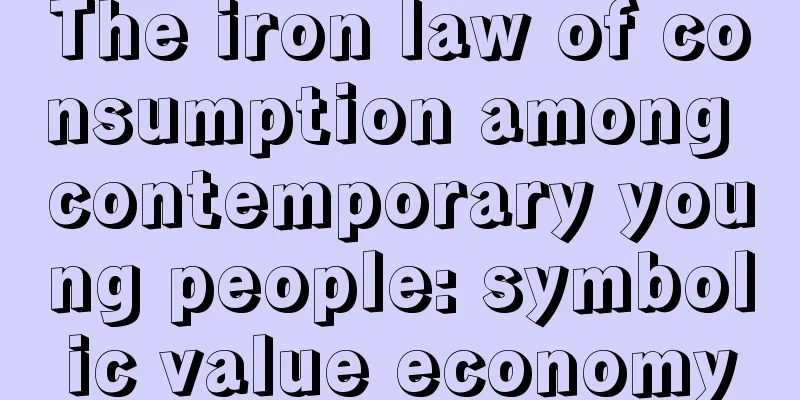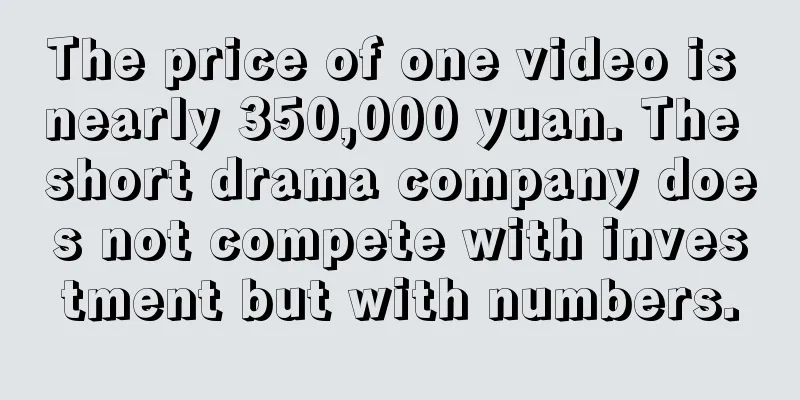Xiaohongshu Advertising | How to select high-quality bloggers?

Look at it from three dimensions: account basic data, commercial value, and content capabilities. Not all of the following indicators need to be looked at for every blogger. Many indicators are interrelated. Maybe only looking at a part of them can determine whether this blogger is the high-quality blogger we want; sometimes some bloggers need to be carefully measured. Of course, when you read more blogger accounts, sometimes you can get a general idea of the level and guess the approximate quotation by just looking at the homepage and randomly picking a note to read. 1. Basic DataThe main purpose of looking at basic data is to see whether the blogger account is a normal and healthy account and to filter out problematic accounts. Therefore, the first thing to observe is whether the account has limited traffic or violates the rules. This can be combined with the following indicators and viewed and analyzed in Xiaohongshu or third-party data background. 1. Look at the health levelIf an enterprise has joined the Dandelion platform and a blogger has also joined the Dandelion platform, they can directly understand the health status of the account through the platform’s latest health level indicators. As shown below, the health level of the blogger account will be displayed on the blogger homepage of Dandelion. There are only three health levels in Dandelion: excellent, ordinary, and abnormal, which indicate the current content and traffic health of the author's account. Excellent : This means that the account content and traffic status are healthy, the account has basic platform order-taking authority, and the account will also receive more brand content cooperation opportunities where the platform actively assigns orders. Normal : Indicates that the account content and traffic status are unstable, and the account has recently engaged in behaviors that are not encouraged by the platform, such as: publishing false information, falsifying account data, abnormal proportion of commercial content, etc. Abnormal : This means that the account content and traffic are abnormal, and the account has recently engaged in a large number of behaviors that are not encouraged by the platform, such as publishing false information, unfriendly and inappropriate content, and falsifying account data. If the blogger has joined the Dandelion platform, you can directly choose bloggers with an excellent health level to avoid problematic accounts. If the blogger has not yet joined the Dandelion platform, or the company has not yet joined the Dandelion platform, you can use the following indicators such as the number of fans and the like-to-fan ratio to judge the account situation. 2. Look at the fansClick on the fan list and you will find that most of the fans are not real people, which are normal accounts; if the fan names are all "Little Red Potato" + a string of numbers, they are likely to be fans generated by a machine; if there are many fans but the personality is empty and has no highlights, and the personality is not proportional to the number of fans, then these are also abnormal accounts. In addition, look at the number of fans of the blogger and the growth of fans in the past 30 days to determine the operation cycle of the account. If the account is in the early or middle stage of operation, the growth potential is better, the cost-effectiveness is high, and it is easy to produce hot products. 3. Likes to fans ratioIf you want to select mid-level bloggers, top bloggers, and celebrities with sticky fans, a like-to-fan ratio of 10:1 to 2:1 is normal. The lower the like-to-fan ratio, the more famous the blogger is or the higher the conversion rate of content to fans. Some celebrity bloggers may even have more fans than likes. If you are selecting an amateur or a junior expert with fewer fans, then I think the like-to-fan ratio does not matter. After all, the number of fans is relatively small. If the like-to-fan ratio is high, check whether the content has a high fan-conversion rate. If the like-to-fan ratio is low, check whether they often produce hot-selling content. Even if they don't convert fans, but can produce hot-selling content, it's also acceptable. 4. Update frequencyYou can look at the update frequency in the last 1-2 months. If you update three times or more a week, you are quite diligent, and at least four times a month. If the account has not been updated for a long time and has not informed fans of the suspension of updates, it means that the account may have entered its final stage, the account activity is low, and the data should be relatively poor. However, if an account updates only a few posts a day and all of them contain advertising content, it is very likely a water account that is specifically used to receive advertising. 5. Content QualityLooking through the notes, if the pictures are of good quality, the videos are clear, the content is mostly collections, hard-core content, and real-life sharing, and there are occasional hot posts, then it means that the account is likely to be normal. If a blogger's content:
6. Note dataLook at the median reading and interaction of the notes to judge the communication performance of the account. The higher the median reading and interaction of the notes, the better the account is. Looking at the like-to-collection ratio of notes, generally speaking, useful articles have more collections than likes, character/topic/plot-related content has more likes than collections, while most notes of problematic accounts have similar likes and collections. Look at the data fluctuations of the account. Normal account data should fluctuate. If you scroll down the homepage of the problematic account, the number of likes is basically the same, and the screenshots of the number of readings are also similar, which is extremely stable. This kind of account has problems. 7. Comments sectionCheck whether the comments in the comment section are real. If there are multiple comments that do not match the topic content or are all mindless praise and positive reviews, it can be judged that 99% of them are fake data; and if the comments are all concentrated on a certain day, then they are most likely fake. If there is a high overlap of commenting accounts, it means that most of them are doing it to maintain the data. If you click on the commenting accounts and most of them have been deregistered, it is also likely to be fake. In terms of the number of comments, if the number of comments is far greater than the number of likes and favorites (except for some social discussion articles), it is also a problem account. In addition to the above data, we should also search the blogger's nickname on the app. If we can only search the nickname but not the notes, this account is likely to have problems and can be directly excluded. 2. Commercial Value1. Expert matchingThere are two matches. First, determine whether the overall tone of the influencer matches the tone of the brand/product. Second, determine whether the influencer’s fan profile is consistent with the target user profile of the brand or product. For example, if the blogger is a beauty blogger for oily skin, then the oil-removing skin care products he shares will definitely be more popular. The matching degree between influencers and brands can be determined through the influencer’s account homepage, Dandelion backend, and third-party analysis tools. For example, in the background of Dandelion, you can view the fan portrait of "Susususu*", a home decoration blogger. Female users account for as high as 94 %, and the fans are mainly in the age group of 25-34 years old. Users are mainly interested in home decoration, food, and fashion, and most of them are from coastal cities and first-tier cities. It can be judged that the commercial value of this account is relatively high and is suitable for most home furnishing and fashion products. 2. Quotation, reading cost, CPEWhen examining the cost-effectiveness of cooperating with bloggers, we mainly look at two indicators: one is the reading cost, which is how much a single reading costs; the other is CPE, which is how much an interaction costs. Because from reading to interaction, to jumping to store browsing, to transaction conversion, it is a link. If the conversion rate is fixed, the lower the initial cost, the lower the final cost will be. In the Dandelion backend, you can directly view the blogger's reported cooperation quotation and estimated reading cost. The third-party data platform can view the CPE cost. Dandelion data and quotes from blogger Susususu * Regarding whether the blogger's quotation is reasonable, the market usually uses 10% of the number of fans as a reference quotation, and adjusts it up or down based on other factors. The number of fans is more of a reference. The specific quotation may vary depending on the blogger's niche, iP stickiness and note quality. In addition, the price displayed on the Dandelion backend is the reported cooperation price, which is generally on the high side. If you can contact the blogger and do non-reported cooperation, the quotation should be 10%-20% lower or more. The situation of different bloggers will be different, so please analyze the specific situation. Generally speaking, home bloggers and makeup and skin care bloggers are relatively expensive, followed by maternal and child bloggers, clothing and fashion bloggers, and then sports and fitness and food bloggers. Of course, it also depends on the actual verticality and quality of each account. Bloggers with good looks, funny and entertaining characteristics have high fans and traffic, but low conversion rate! Bloggers with the type of grass-planting characteristics have relatively low traffic, but they are strong in bringing in goods. Regarding CPE, this is an important measurement indicator. It is the average interaction volume of the quote/expert’s video notes in the past 30 days. It can be viewed through third-party data. Taking the Xinhong platform as an example, after entering the blogger’s homepage and checking “delivery analysis”, you can view the CPE and CPM data of the blogger’s pictures, texts and videos. Unreported quotations and prices of different forms of cooperation will cause changes in the actual CPE data, so it needs to be comprehensively measured in combination with other situations. Generally speaking, a CPE below 3 can be considered a blogger with a decent price-performance ratio. The CPE of this blogger is 0.61 for pictures and texts, and 1.84 for videos, both of which are relatively low. It can be judged that this is a blogger with good cost performance. In addition, relatively speaking, the CPE of this blogger's pictures and texts is lower, so text and picture cooperation can be considered. Su Su Su Su * - New Red Data 3. Have you published any competing content recently?Check if there are any content related to competitors recently. If so, you may need to stagger them and not cooperate recently, but you can still contact them and arrange a future cooperation schedule with the blogger. High-quality bloggers are hard to come by, so you need to grab the schedule as soon as possible. 3. Content CapabilitiesCooperation with influencers is essentially content co-creation, so it is necessary to examine the blogger's content capabilities. 1. Basic content capabilitiesLook at the blogger's past notes, and examine whether the daily non-advertising content is sincere and touching from the dimensions of title, picture/video quality, copywriting, etc., as well as the blogger's ability to output useful information, ability to produce pictures, texts and videos, ability to create content materials, and ability to package content. 2. Ability to create hit productsLook at the content in the past month to see how many hits there are (hit rate), and whether the hits are commercial or non-commercial. Some bloggers can write very good non-commercial content, but the data of commercial notes recommending products or soft advertising implantation notes will not be good, so they need to be viewed separately. 3. Commercial content capabilitiesThe first two items are the basis, and the focus is on the business content ability. Here we mainly look at the blogger's business cooperation notes or soft advertising implantation ability. Some bloggers want to make a living but don't want to make a living properly. Their business notes are rigid, and once they write business notes, their data will be a Waterloo. Even if the daily notes of such bloggers are good, the commercial value will be discounted. However, some bloggers can share sincerely whether it is daily notes or business notes, and their business notes can also become popular. After reading the above three parts, including basic data, commercial value, and content capabilities, it will be clear whether a basic blogger is suitable or not. Have you learned it? Author: Christine Source: WeChat public account "Christine's Marketing Notes (ID: yanhong_8090)" |
<<: 2022 Christmas Creative Review [Part 2]
>>: How to make your brand younger
Recommend
How does Amazon ship large items? What are the charges for large items?
With the increasing popularity of online shopping,...
What is cheaper on Amazon than in China? What is the best deal on overseas shopping on Amazon?
Amazon is still very popular as a cross-border e-c...
With the support of China Post, Snow King’s “recruitment” has become a hot topic!
Mixue Ice City recently collaborated with China Po...
Should Xiaohongshu do live streaming? If so, how should it be done?
This article deeply analyzes the opportunities and...
Is it reliable to open a store on Amazon without any source of goods? Is it profitable?
Some friends have adopted the no-source store mode...
How does Shopee ship to Malaysia? What are the shipping cost calculation methods for Shopee Malaysia?
If you are a seller, you may be wondering how to s...
Business ceiling = category value / (brand value x consumption frequency x consumption stickiness)
This article analyzes in detail the three leading ...
Brand No. 1: Attack, Defense, Defend, Retreat
Combining Sun Tzu's Art of War with brand oper...
What does overseas marketing do? What about doing overseas sales?
It is not easy to do e-commerce. If there is one t...
AI live streaming chaos frequently occurs, and the platform takes action to rectify the chaos of "AI beauties" and selling courses
With the rapid development of AI technology, the l...
TikTok Shop, a copycat for Southeast Asia
This article introduces the rapid development of T...
[Brand Design] A rare and unique brand activity IP case is here
In large Internet platform companies, maintaining ...
Is Amazon's overseas self-operation reliable? Is it a third party?
Many people will open stores on Amazon. When openi...
Turning hot spots into brand memories, reviewing 5 best marketing cases of the year
There are only a few days left until the new year....
How to write a new product promotion plan on Amazon? What are the tips?
There are more and more merchants opening stores o...









